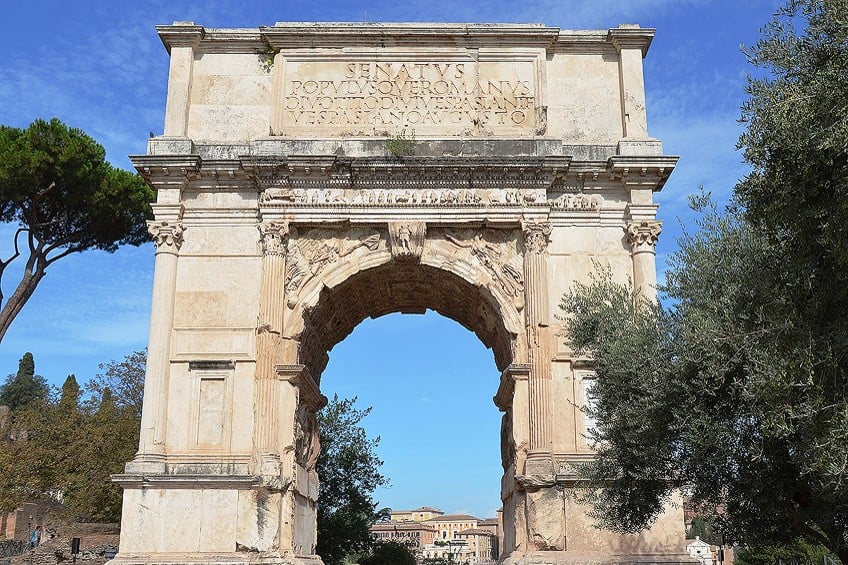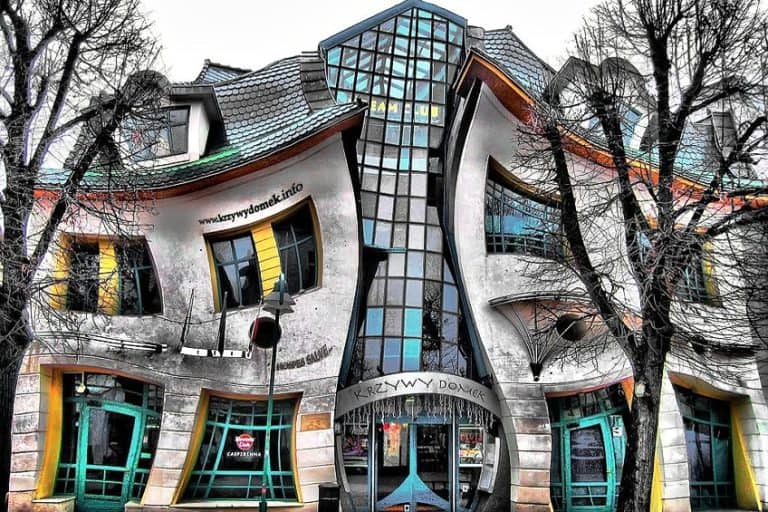Arch of Titus – Through the Arch of History
Why was the Arch of Titus built and who built the Arch of Titus? The Roman Emperor Domitian reigned from 81 to 96 CE, and was responsible for building this triumphal arch. He built it to commemorate his father and brother’s victory in the Jewish War, which took place in 70 CE in Judea. The Arch of Titus’ inscription states that the arch is from the people and senate of Rome, in commemoration of Titus, son of Vespasian.
The Purpose of the Arch of Titus
| Architect | Rabirius (c. 1st century CE) |
| Date Built | 81 CE |
| Function | Triumphal arch |
| Location | Via Sacra, Rome, Italy |
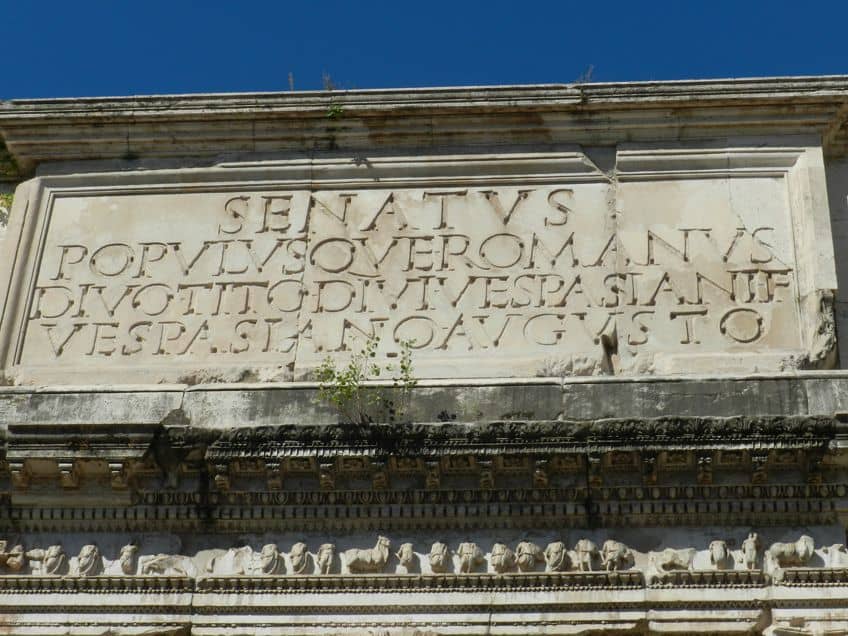
When was the Arch of Titus built? Constructed in 81 CE, Emperor Domitian built the arch not only to celebrate his father and brother’s victories but also to commemorate his brother Titus’ deification, in which a person is lifted to the level of a deity.
It features panels portraying the Roman triumphal procession following the fall of Jerusalem and offers one of the only contemporaneous depictions of the objects that were taken from Herod’s Temple.
While there are no specific Arch of Titus inscriptions that specifically states that the panels depict the procession, they fit the description of the procession as described in The Jewish War (75 CE) by Josephus, which was written four years after the event.
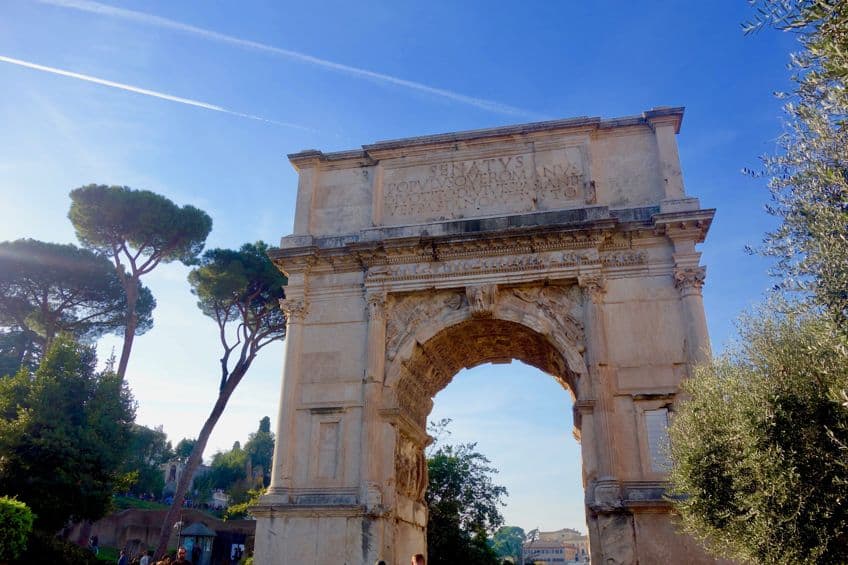
It came to be regarded as a symbol of the Jewish population diaspora, in which a nation was scattered across many countries, and the emblem of the state of Israel, the menorah, was modeled after the one portrayed on the Arch of Titus.
Since the 16th century, many arches have been built that were inspired by the general appearance of the Arch of Titus, such as Paris’ Arc de Triomphe.
The History of the Arch of Titus
Some historians believe that the architect Rabirius may have possibly built the Arch of Titus due to the sculptural details’ styling. However, attributing Roman structures based purely on style without any contemporary documentation can be impossible to verify. Even though Domitian had constructed the arch in memory of his brother, the Roman historian Cassius Dio described the emperor’s feelings for his brother as “hateful”.
Another story was added to the vault by the Frangipani family in the middle ages, effectively turning it into a fortified tower.
The beam holes from the construction of the second story can still be seen in the panels. It was also used as the location where Pope Paul IV would conduct his annual oath of submission. The arch was one of the first structures to undergo a modern renovation, beginning in 1817 with Raffaele Stern and continuing in 1821 with Valadier, including new capitals and travertine brickwork distinct from the original marble.
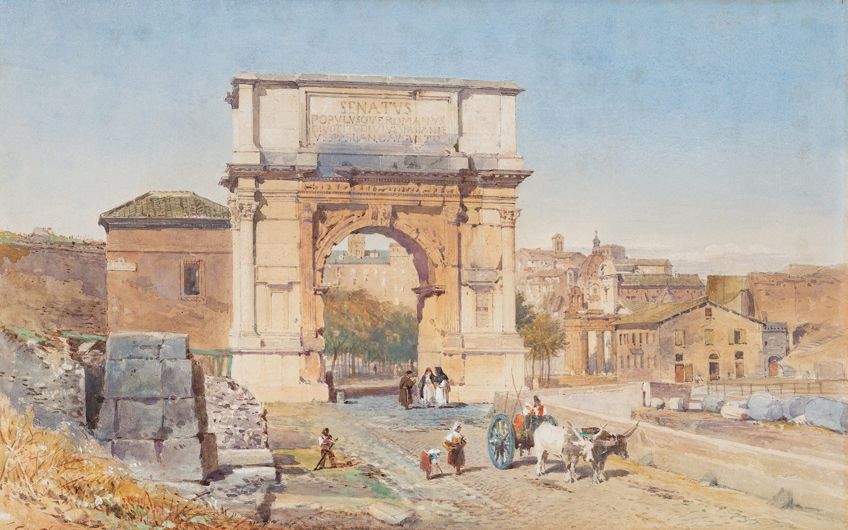
The Chief Rabbinate of Rome enforced the prohibition of Jews passing under the arch. This was later reverted at the formation of the State of Israel in 1948, and the change in law was made public in 1997 at a Hanukkah event.
There is no mention of the Arch of Titus in any Rabbinic literature.
Description of the Arch of Titus
The Arch of Titus features both unfluted and flute columns, the former of which was added in the restoration which took place in the 19th century. It is quite large, measuring just over 15 meters in height, 4.7 meters in depth, and width of 13.5 meters. The upper right and left spandrels portray winged women who serve as personifications of victory. The keystone is located between these spandrels, featuring a man on the western side and a woman on the eastern side. The axial archway’s canopy is richly paneled, with a relief depicting Titus’ deification in the middle. It also features two panel reliefs along the arch’s passageway. Both of the panels commemorate Titus and Vespasian’s military triumph of 71 CE.
The treasures captured from Herod’s Temple are depicted on the southern inner panel. Etched in deep relief, the golden menorah is the main subject of this panel.
Fire pans for collecting the altar’s ashes, silver trumpets, and the Table of Shewbread are some of the other sacred objects that are portrayed being carried in the triumphant procession. These treasures were most likely once colored gold, with a blue backdrop. A yellow ochre pigment was discovered in the menorah relief during a digital restoration project in 2012. The northern inner panel portrays Titus as a triumphant figure surrounded by different genii and civil servants carrying bundles of wooden rods called faces.
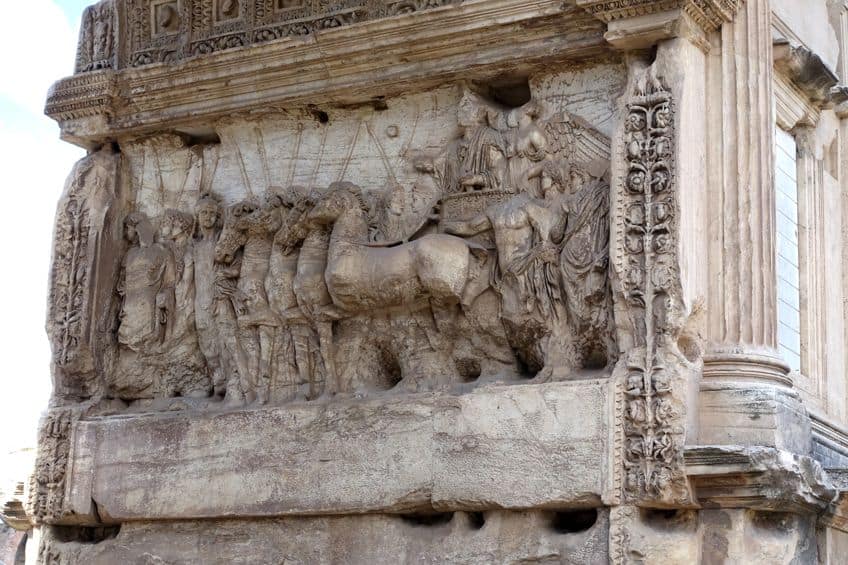
Valour, a helmeted Amazonian, commands the four-horse chariot, which brings Titus. Winged Victory then bestows him with a laurel wreath. The combination is notable since it is one of the first instances of humans and divinities portrayed in the same picture. This is in contrast to the Ara Pacis panels, which divided people from divine beings. When the medieval defensive walls were integrated into the arch, the sculpture on the exterior sides of the two great pillars was destroyed. The arch’s attic was originally topped by further sculpture, possibly of a golden chariot.
The main inscription was once embellished with letters made of gold, silver, or perhaps some other metal. The original Arch of Titus inscription is affixed to the eastern side.
After being reconstructed by Giuseppe Valadier during the papacy of Pope Pius VII in 1821, the other wall of the Arch of Titus received another inscription. This restoration was purposefully executed in travertine to distinguish between the original and renovated elements. This inscription stated that the monument, while remarkable in both artistic and religious terms, had weakened over time and that the seventh Pontiff had ordered that it be reinforced and properly preserved.
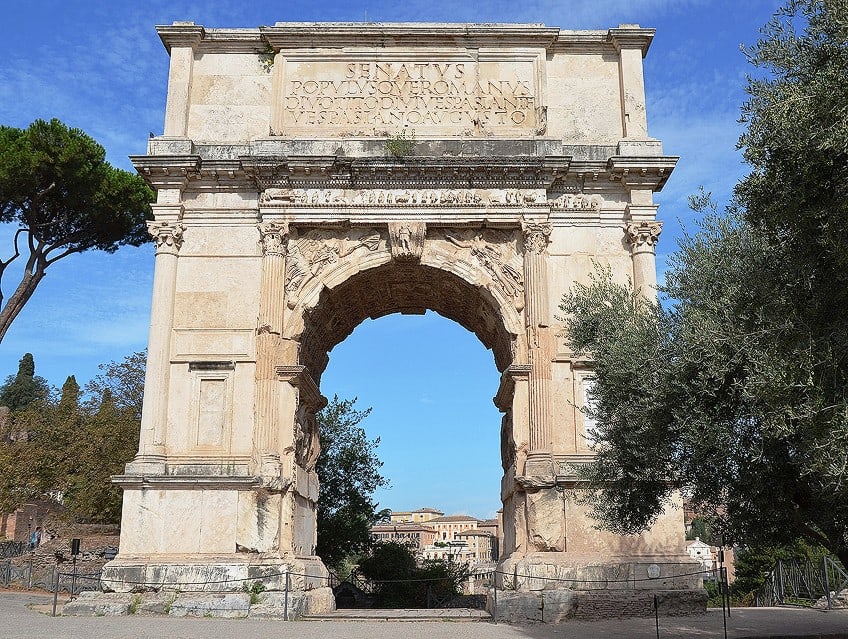
Since its construction, the Arch of Titus has served as the model for many other structures. The list of buildings inspired by the arch includes the Arc de Triomphe in Paris, Washington Square in Manhattan, Fusilier’s Arch in Dublin, and the India Gate in New Delhi.
Emperor Domitian decided that a triumphal arch was an appropriate way to celebrate his father and brother’s victory in Jerusalem. He wanted to commemorate their success by illustrating the procession that followed the plundering and transport of all the treasures that had been stored inside Herrod’s castle. Not only that, but Domitian also wanted to use it as a way to commemorate his brother’s deification. The design of the Arch of Titus proved to be so popular that several other now-famous arches were subsequently built on the same basic design.
Frequently Asked Questions
Why Was the Arch of Titus Built?
The arch commemorates Vespasian and Titus’ triumphs in the Jewish War in Judaea. The ancient city of Jerusalem was plundered during the battle, and the famed treasures of the temple were looted. It also served as a religious and political statement, emphasizing the late Emperor Titus’ divinity. The arch is richly adorned with panels of the procession that occurred following the looting of Herrod’s Temple.
Who Built the Arch of Titus?
The arch was built by Emperor Domitian, the son of Vespasian and the brother of Titus. Because of the arch’s sculptural detailing, many historians claim that the arch was designed by the Roman architect Rabirius, who is also believed by some scholars to have built the Colosseum. However, as there are no historical accounts from that time that confirm Rabirius as the potential architect, it cannot be definitively proven who the actual architect was.
When Was the Arch of Titus Built?
The arch was constructed by Emperor Domitian around 81 CE. The procession, which the arch’s panels are believed to depict, occurred after the battle in Jerusalem in 71 CE. There are no written records that state that the panels actually represent the procession. However, a book that was written four years after the event, The Jewish War (75 CE) by Josephus, provides a detailed account of the procession which seems to match the story being illustrated in the arch’s panels. There were also several renovations to the arch in 1817, and then again in 1821.
What Does Deification Mean?
The Roman Emperor Domitian was said to have constructed the arch partly as a way to commemorate the deification of Titus, his brother. But what exactly does that mean? Deification is an idea found in many civilizations and religious groups that elevates an individual to the level of a divine entity. Deification can entail a number of rituals, rites, or gestures of devotion, and is typically viewed as a means of attaining spiritual transcendence or oneness with the infinite. Deification is presumed to happen after death in certain religions, but during one’s lifetime in others.
What Is a Menorah?
A Menorah is a candelabra with seven branches. It is typically used in Jewish traditions and celebrations, such as Hanukkah. The Menorah was used in Herrod’s Temple and was one of the many ancient treasures that were believed to have been plundered by Titus and his father during the Jewish War, which occurred in 70 CE in Judea. During Hanukkah, one of the candles is lit every day for a seven-day period.
Justin van Huyssteen is a freelance writer, novelist, and academic originally from Cape Town, South Africa. At present, he has a bachelor’s degree in English and literary theory and an honor’s degree in literary theory. He is currently working towards his master’s degree in literary theory with a focus on animal studies, critical theory, and semiotics within literature. As a novelist and freelancer, he often writes under the pen name L.C. Lupus.
Justin’s preferred literary movements include modern and postmodern literature with literary fiction and genre fiction like sci-fi, post-apocalyptic, and horror being of particular interest. His academia extends to his interest in prose and narratology. He enjoys analyzing a variety of mediums through a literary lens, such as graphic novels, film, and video games.
Justin is working for artincontext.org as an author and content writer since 2022. He is responsible for all blog posts about architecture, literature and poetry.
Learn more about Justin van Huyssteen and the Art in Context Team.
Cite this Article
Justin, van Huyssteen, “Arch of Titus – Through the Arch of History.” Art in Context. September 7, 2023. URL: https://artincontext.org/arch-of-titus/
van Huyssteen, J. (2023, 7 September). Arch of Titus – Through the Arch of History. Art in Context. https://artincontext.org/arch-of-titus/
van Huyssteen, Justin. “Arch of Titus – Through the Arch of History.” Art in Context, September 7, 2023. https://artincontext.org/arch-of-titus/.


